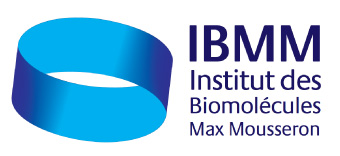Nanostructured materials and practical applications
Séminaire Chimie ED459 “minisymposium”
Deux conférences par Nikola Ž.
Le Jeudi 12 Juillet 2018 à 14h
ENSCM, Amphithéâtre Godechot (campus Balard, 240 av. Émile-Jeanbrau)
Date de début : 2018-07-19 14:00:00
Date de fin : 2018-07-19 15:30:00
Intervenant : Nikola Ž.
BioSense Institute, Novi Sad, Serbia | University of Belgrade, Serbia
Programme :
1. — [bleu]Practical applications of porous silica and organosilica nanomaterials[/bleu]
Dr. [marron]Nikola Ž.
2. — [bleu]Nanostructured TiO2 materials for photocatalytic and photovoltaic applications[/bleu]
Prof. [marron]Djordje (Đorđe) T.
Contact local ICGM : Dr. Jean-Olivier
Résumés des conférences
1. — [bleu]Practical applications of porous silica and organosilica nanomaterials[/bleu]
Dr. [marron]Nikola Ž.
BioSense Institute, University of Novi Sad, Serbia
Porous silica and organosilica nanomaterials have been showcased for different application possibilities in recent years due to their tunable particle and pore diameters, high surface area, high thermal stability and plethora of functionalization strategies. Construction of a wide range of complex nanomaterials, having various characteristics, is possible for application in controlled delivery, catalysis, separation and sensing.
The topic of this talk will be focused on our recent advances on employing PMO and MSN-based nanomaterials for various practical applications. Loading drug molecules on the surface or inside the pores of MSN and PMO materials allows their sustained and controled release for application in targeted cancer therapy.[1] These materials can be also functionalized with a reporting molecule, which can be easilly detected by means of fluorescence, magnetic resonance and other techniques to allow live monitoring of the treatment process through simultaneous imaging. Potential of MSN and PMO nanomaterials for application in sunscreens as UV blocking materials have been also evaluated for the first time as well.[2] As determined, UV-blocking characteristics of these materials are significantly influenced by the inner composition (PMO vs. MSN), surface functionalization and the diameter of nanoparticles, with the wide range of obtained sun protection factor (SPF) values (1.2 – 18.5) and broad UVA and UVB protection capabilities. Our current initial efforts on developments of novel sensing devices at the BioSense Institute will be also introduced.[3]
References
1. N. Z. Knežević, G. N. Kaluderovic, Silicon-based nanotheranostics. Nanoscale 2017, 9(35), 12821–12829.
2. N. Ž. Knežević, N. Ilić, V. Djokić, R. Petrović, D. Janaćković, Mesoporous silica and organosilica nanomaterials as UV-blocking agents. ACS Appl. Mater. Interfaces 2018, 10(24), 20231–20236.
3. Website: https://biosens.rs/?page_id=8052&lang=en
2. — [bleu]Nanostructured TiO2 materials for photocatalytic and photovoltaic applications[/bleu]
Prof. [marron]Djordje (Đorđe) T.
Faculty of Technology and Metallurgy, University of Belgrade, Serbia
Co-authors: Veljko R.
Due to its outstanding physical and chemical properties, and especially photocatalytic / photoelectrochemical activity, titanium dioxide is one of the most studied semiconductor materials for applications in environmental protection and renewable energy sources. However, owing to its wide band gap and fast electron/hole recombination, the efficiency of photo(electro)catalysts based on TiO2 is typically low for potential practical applications. In order to improve the photocatalytic / photoelectrochemical and photovoltaic efficiency of TiO2, research efforts have been dedicated to: (i) reducing the band gap energy by doping/co-doping (N-, C-, S-, etc.) and/or enlargement of its absorption in the visible region using photosensitizes (CdS quantum dots – QDSSC), (ii) reducing the recombination rate of photogenerated charge carriers (TiO2 / functionalized carbon nanotubes (CNT) nanocomposites, etc) and (iii) increasing the specific surface area and the quality of the active sites (nanoparticles, nanorods, nanocomposites, nanostructured thin films, nanotubes, etc.). The phase composition, crystallite size, and the structural and surface properties of the obtained nanostructured TiO2 materials were analyzed by XRD, FEG-SEM, TEM / HRTEM / EFTEM, XPS and FTIR spectroscopy, as well as by low temperature N2 adsorption. The obtained nanostructured TiO2 materials exhibit enhanced photocatalytic/photovoltaic efficiency.
